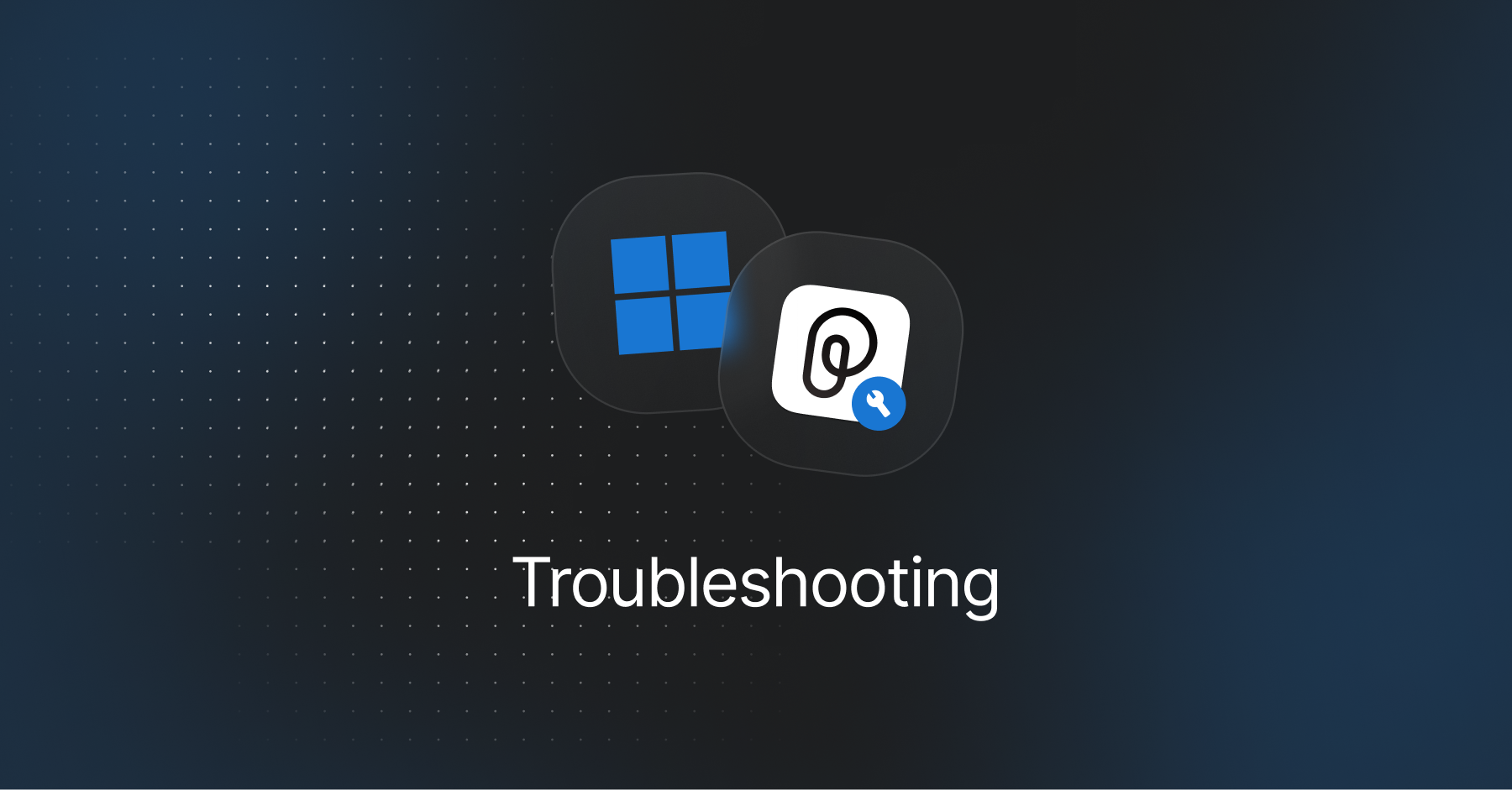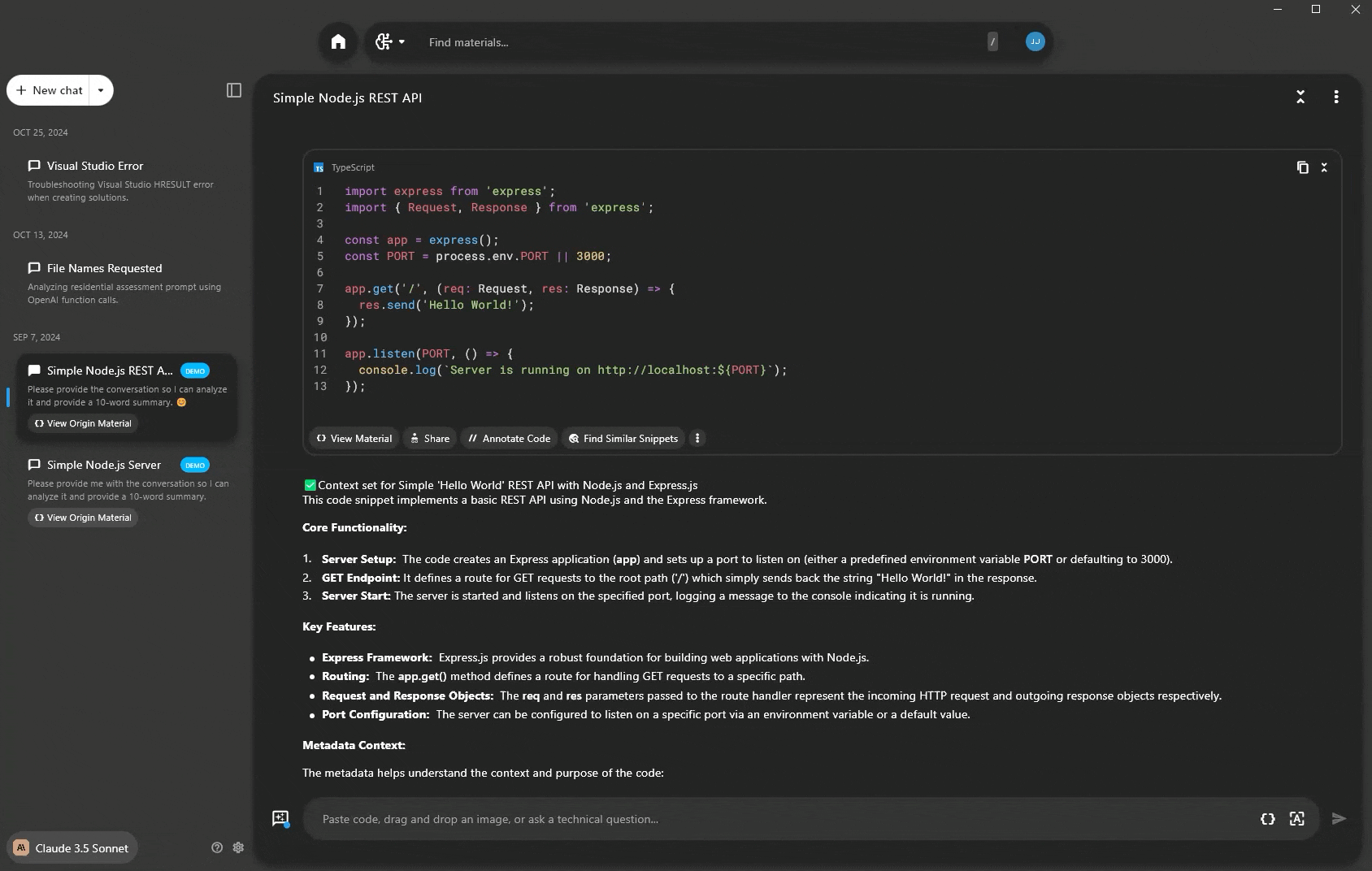
Installation & Updating Fixes
PiecesOS and the Pieces Desktop App can be downloaded in several ways, and the update process varies based on the method you used, like whether you installed them via WinGet or .exe files.
Manual Installation Methods
If you’re experiencing difficulties with installing PiecesOS or the Pieces Desktop App, you can install both applications manually by downloading the standalone .exe or .appinstaller files.
via EXE Files
You can download the individual .exe files for PiecesOS and the Pieces Desktop App by clicking the download links below.
*Required Core Dependency*
Windows 10 (1809) or higher required.
*Alternative Method*
Windows 10 (1809) or higher required.
via WinGet
To install the Pieces Desktop App and PiecesOS using WinGet, follow these steps:
Open a Terminal: Launch Windows Terminal, Command Prompt, or PowerShell as administrator.
Run the WinGet Command: In the terminal, type
winget install “Pieces”and pressenter.
You may be prompted to enter Y or N to agree or disagree with the terms of use when installing the Pieces Desktop App—type and enter Y to proceed with the installation.
- Install PiecesOS: Next, install PiecesOS by typing
winget install “Pieces OS”and pressingenter.
You will be prompted to agree or disagree to the terms of use a second time, so enter Y to proceed with the installation.
Once this is finished, you can now launch the Pieces Desktop App by pressing the Windows symbol (⊞) or toggling the search bar and typing Pieces, clicking Pieces Desktop.
Versions & Updates
Many issues can stem from out-of-date plugins, extensions, the desktop app, or PiecesOS itself.
Updating PiecesOS
To restart and check for updates to PiecesOS on Windows:
Locate the Pieces Icon (
P) in your taskbarClick the icon to view your update status
If an update is available, follow the on-screen prompt to download and install it.

For standalone .EXE installations, updates are checked daily or upon application launch, prompting you to install or delay as needed.
Updating the Pieces Desktop App
Updating the Pieces Desktop App on Windows (and macOS) can be done directly within the application:
Open the Pieces Desktop App
Click the User Icon to the right of the Search Bar at the top of the main app view
Select
Check for Desktop App UpdatesIf prompted, click
Download Updateinstall available updates

You can also select Check for PiecesOS Updates from the same menu as an alternative to doing so from the PiecesOS system window in your taskbar.
Issues Launching PiecesOS
Some users who have enabled Controlled Folder Access (CFA) as a security measure may receive a notification that Pieces is attempting to bypass this security wall.
To work around this issue, you will need to add the executable path for PiecesOS to your allowlist.
CFA disables and blocks any request to modify files (in this case, writing & saving data), so PiecesOS is unable to launch itself.
Keep in mind that this path references the specific PiecesOS version, and so will change over time as long as you continue to update the software.
You can also disable CFA as a security measure if you do not require it as part of an enterprise scenario or for any other reason.
To decide which apps PiecesOS has access to, you can easily enable and disable specific sources from the Long-Term Memory Access Control panel.
Common Installation Issues
Windows users may encounter installation issues for various reasons, such as out-of-date OS components or incomplete dependencies.
Checking for Windows Updates
Before installing, ensure your Windows system is fully updated:
Click the Start button, then select
SettingsClick
Windows UpdateInstall any pending updates and restart your computer
Updating the Microsoft Store & App Installer
Open the Microsoft Store
Click on
Libraryto check for available updatesUpdate the Microsoft Store and the App Installer if prompted
Retry installing the Pieces Suite
Accessing Pieces Logs
On Windows machines, Pieces writes its log files under your local AppData folder. You’ll find two separate folders depending on which component you’re using:
- Pieces OS (POS) logs:
C:\Users\<USERNAME>\AppData\Local\Mesh Intelligent Technologies, Inc\Pieces OS\com.pieces.os\production\Support
- Pieces Desktop (PFD) logs:
C:\Users\<USERNAME>\AppData\Local\Mesh Intelligent Technologies, Inc\Pieces OS\com.pieces.pfd\production\Support
Checking Hardware Specifications
It may be necessary to verify your system’s specifications if you experience ongoing issues, especially when attempting to utilize local LLMs.
To check your device specifications on Windows:
Press the
Windowskey on your keyboard, or theWindowsicon in the taskbarType
runand hitenterType
dxdiagand press enter on, or click, the blueOKbutton
The System tab displays your processor, the number of CPU cores, and memory (RAM), while the Display tab lists your GPU, its manufacturer (NVIDIA, AMD, Intel, etc.), and the available video memory (VRAM).

Read documentation on the minimum recommended hardware specifications across all OS platforms.
Checking Windows Version
If the Pieces Installer is not working as intended, you could have an outdated version of Windows. The minimum Windows version that Pieces will run on is Windows 10 20H0 or higher.
To check what version of Windows you’re running:
Press the
Windowsand theRkeys simultaneously on your keyboardA new window will pop up, type
winverand pressEnter
A new window will open called About Windows, which will display your current Windows version.

Restart & Retry
If the problem persists, please open a GitHub issue for further assistance or book a call with our engineers.